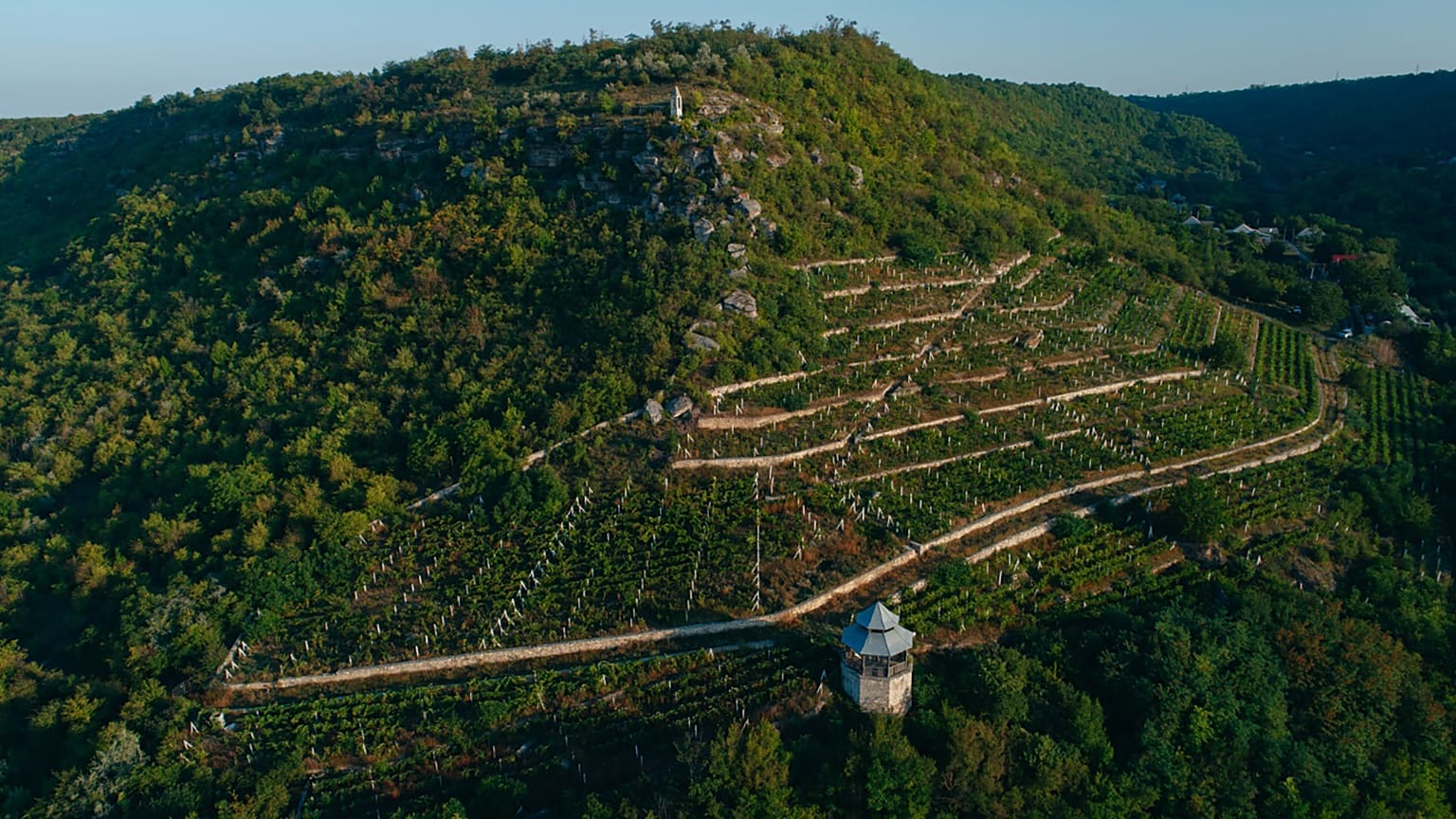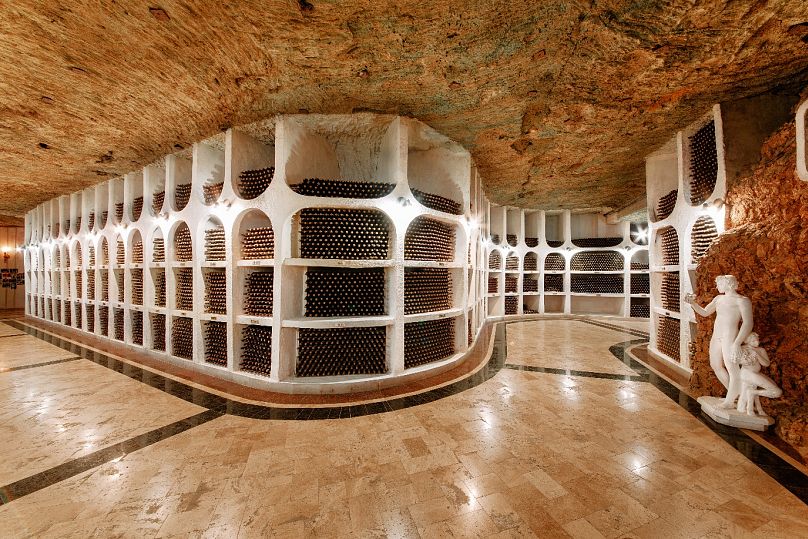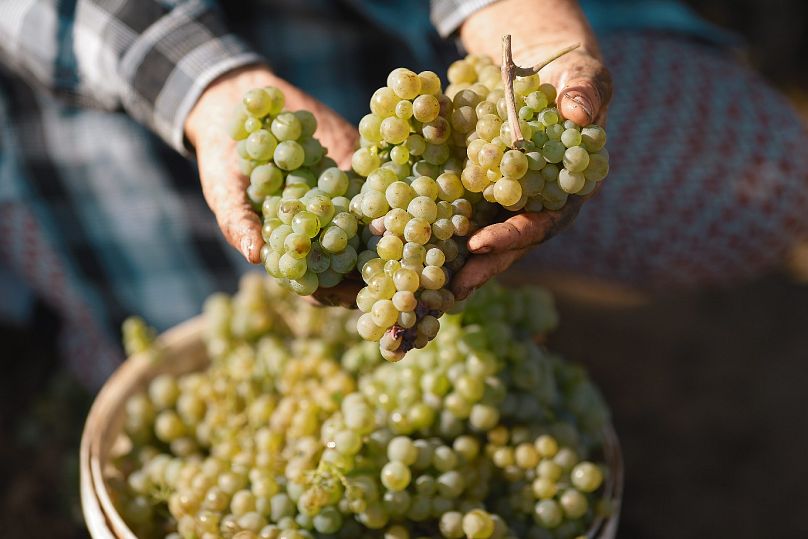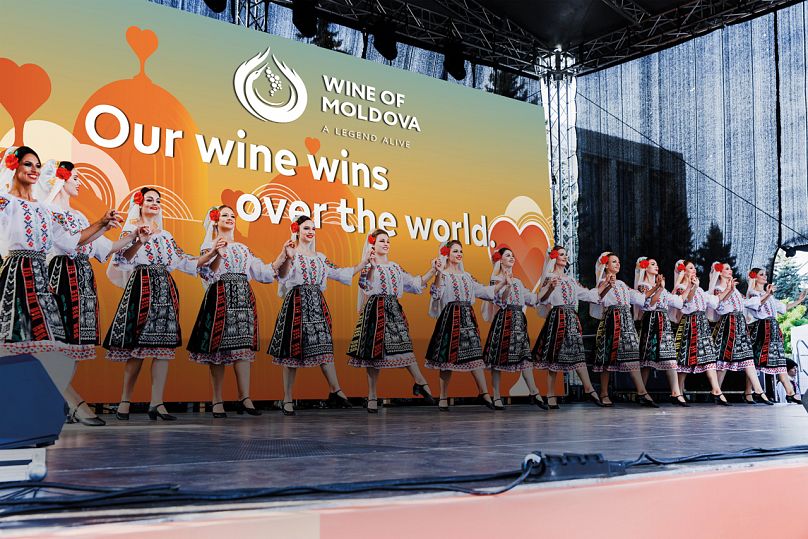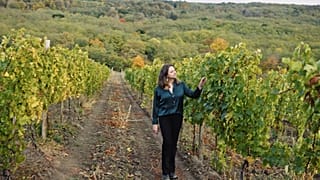Eastern Europe holds few sights to equal the underground labyrinth of Milestii Mici; 200 kilometres of streets dug out from limestone and traversed by electric cars and bicycles. This curious subterranean wonder is neither a town, nor is it catacombs, nor even a purpose-built tourist attraction. Milestii Mici is a wine cellar.
The biggest wine cellar in the world, according to the 2005 Guinness World Records, and a monument entirely in keeping with Moldova’s position as the 20th-largest producer of wine globally. It holds around two million bottles of wine and reflects not only the volume but the vast variety of wines made in the country.
Attracted by the mild winters and warm summers; breathtaking landscapes; medieval monasteries and fortresses, as well as its welcoming people, visitors to Moldova are increasingly likely to make the most of the opportunities for wine tourism, including drivable ‘wine routes’, vineyard visits and, in October, the celebration of all things viniculture at National Wine Day.
Moldova’s unique heritage and terroir
Sitting between Ukraine and Romania, Moldova is a land of gently undulating hills. Its south-facing slopes rolling down towards the Black Sea, fertile soil and moderate climate provide perfect vine-growing conditions (markedly similar to those in Tuscany or Piedmont), and fossils suggest the presence of vines in the region around 25 million years ago.
Nowadays, 128 000 hectares of land are covered with vitis vinifera, making Moldova the country with the highest density of vineyards in the world. While most of these are used for commercial production, it is also common for Moldovans to grow their own grapes in order to make wine to drink at home.
Archaeological remains show that this tradition started as far back as 5000 BCE, when the indigenous people began cultivating grapes to make wine. This ancient tradition continued via a brisk trade with the Greeks and Romans, and wine was an important regional trading commodity throughout the Middle Ages, despite the heavy taxation imposed by the Ottoman Empire.
After Moldova became part of the Russian Empire in the 19th century, Russian aristocrats poured money into the sector, and French grapes were introduced and cultivated alongside the traditional Moldovan varietals. Gradually word spread internationally, and local wines began to be exported to many countries around the world, including the United Kingdom, France and Germany.
After Moldova became an independent state in 1991, the industry was denationalised and what were by this time world-renowned vineyards attracted significant private investment. Moldovan wine is currently exported to more than 75 countries over three continents.
Varietals and protected denominations
There are three protected geographical regions for Moldovan wine. Valul lui Traian (Trajan’s Wall), to the south west of the country, has a Mediterranean climate, thanks to the proximity of the Black Sea and the protection of forested hills. Around 60 per cent of its wines are red, though its sweet fortified wines are also popular, along with full-bodied whites.
Ștefan Vodă, east of here, is also known for its reds, particularly those made using Rara Neagră, a local grape. Codru, in central Moldova, has a cooler climate and is threaded through with river valleys. White grapes do especially well here.
Divin is the name given to the Protected Geographical Indication (PGI) given to the entire country for the production of its hugely popular brandy.
Wine production has tended to reflect the social and economic situation of the times, and for many years focused on the sweet and semi-sweet wines demanded by the export market to Russian Federation. When a Russian ban was imposed on Moldovan wines in 2006, the industry adjusted to international tastes, and since then, the focus has again been on drier wines.
Also making a comeback are the indigenous grape varieties: rara neagră, fetească neagră, fetească albă and feteasca regala. Alongside these historic grapes, two new resistant varieties have become important additions to Moldova’s grape portfolio: Alb de Onitcani and Viorica developed at the National Institute of Winemaking and Viticulture of the Republic of Moldova in 1970. For a while these fell out of fashion, as winemakers anxious to please world markets played it safe with cabernet sauvignon, merlot, pinot noir, sauvignon blanc, chardonnay and so on, but as confidence in Moldovan wines has grown, so has the interest in its terroir and the distinctive local character of its grapes.
Visiting vineyards and festivals
The celebration of Moldovan winemaking culminates in the annual National Wine Day, a festival entailing two days of tastings, workshops and live music in the capital, Chişinău, and held on the first weekend of October. Oenophiles fly in from around the globe to attend, and winemakers from more than 90 vineyards, large and small, take part. Events are also held in wineries across the country, including many that aren’t normally open to the public.
A wine school offers masterclasses in tasting and consumption, and visitors are invited to travel through time in courtyards filled with ancient winemaking tools. They can learn traditional Moldovan dances or take a class in pottery, carving and other artisanal crafts typical of the region.
At any time of year, wine enthusiasts can experience Moldova through the ‘wine routes’, which take visitors around four historic wine-producing regions. Passing through more remote areas and to lesser-known attractions, they offer a completely new way to get to know this fascinating country, its hospitable people, hearty cuisine and ever-changing landscapes.

